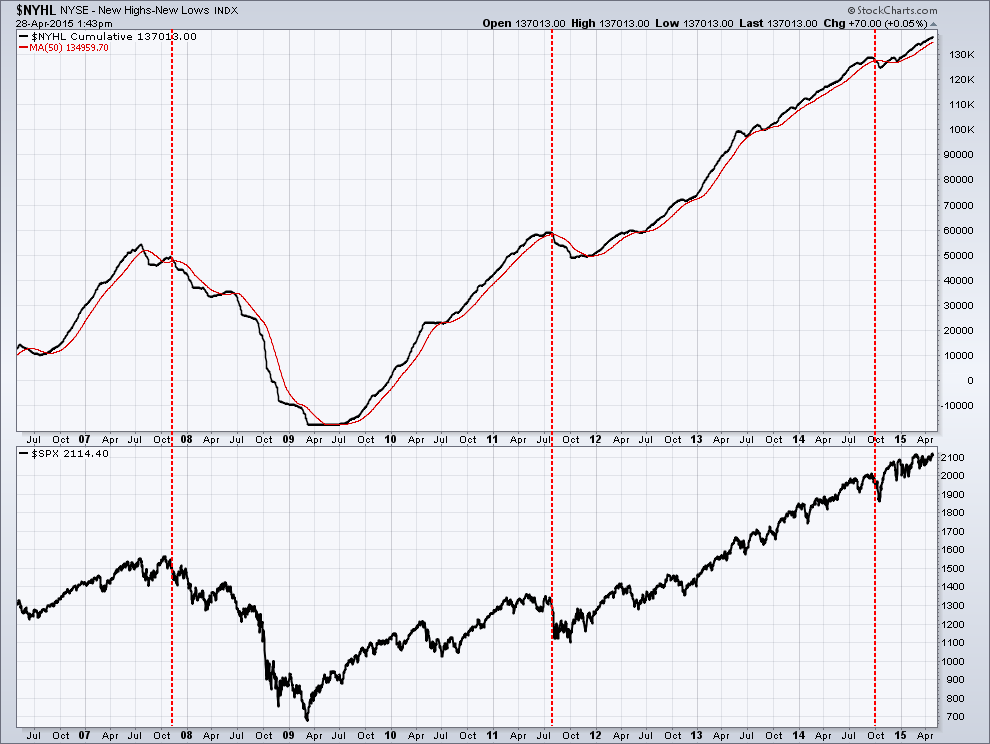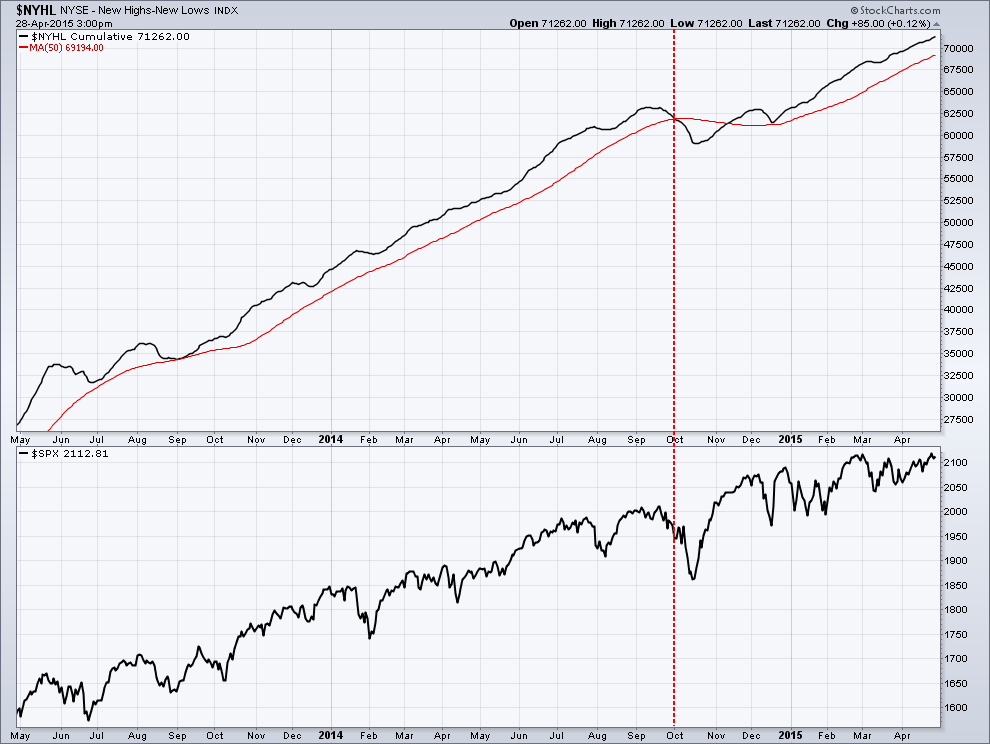On the longer time frame, as I said in last week’s video, it looks to me as if the markets want to go higher. The biggest question for me is will that move higher start from where we are at today, or some point lower as a result of a correction. I don’t like to keep reminding everyone how long it has been since we have had a 10-20% pullback and as such we are long overdue, but the longer we go without one the bigger it will be once it finally arrives. Think of it as a rubber band that we continue to stretch. Eventually it either breaks or we have a nasty snap-back. The markets are no different.
As I said in my video there are a number of negatives that I see in the market right now and wanted to present one that I am watching closely. Regardless of whether the market is going up or down, it’s important to closely watch the market leaders as they tend to give you a clue on what to expect from the broader market. In an uptrend the leader tend to be the first into a correction. There is no question the market leader since the 2011 bottom has been biotech. The biotech index has outperformed the SP500 by more than 70% during that same timeframe as you can see in the weekly chart below. Even to an untrained eye I hope we can all agree this chart represents an investment in a strong uptrend.
Drilling down to a daily view of the investment we use as a biotech index proxy, IBB, you can see in the chart below the picture is flashing a warning sign. What should jump out at you is the fact the market created a divergent double top. The double top alone is a warning sign but when accompanied by divergence (this is when the momentum is falling while price is rising) it makes the warning that much more significant. Also you should notice I have annotated a red horizontal support line where price has currently tested at least 4 times (illustrated by red arrows). I point this out because it is important to remember the more times price tests a line of support the more likely it will eventually break it. In my experience rarely does price hold more than 5 times, right now we have completed 4 and the next will be #5. So it should not surprise you it is my expectation that if price goes back to retest that line one more time it likely will not hold and will continue to fall further. To where you may ask. The first projected resting point for a break would be the second, lowest (red) horizontal line which is about a 10% decline. If the decline picks up steam the next stopping point would be the lower blue trend line in the first chart above, some 20% south of where we are today. Projections are just that, and there are no guarantees it will reach the targets or will even stop once it does. What it does do is provide a high probability based upon prior share supply and demand history. As we all know, the market is the final arbiter of if there will be a correction and where it may end, not me. I just report on what I see at a specific point in time.
No one wants to live through them but a correction of any magnitude is a healthy and necessary for the ongoing, long term uptrend of any market. The biotechs, along with many of the other leaders are looking very tired at the time when stocks are beginning their weakest seasonal period. As such, pushing the limits to reach for return at this point in time is not something I find a prudent strategy and a main reason why we have been reducing client stock exposure. Invest Safe!






